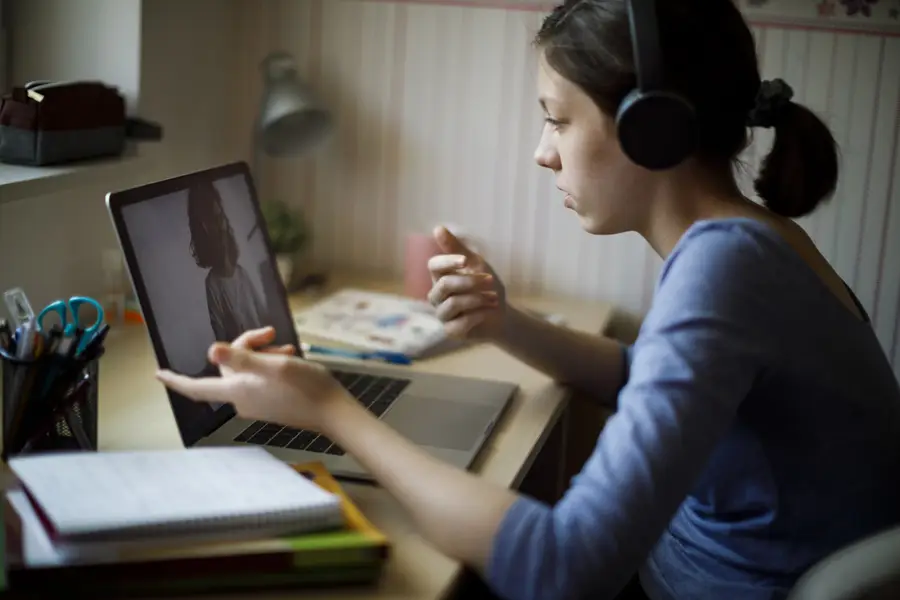
The Power of Coaching
Part 2 of the Coaching for Teacher Resilience during COVID-19 blog series elaborates on how effective coaching can fortify teacher resilience in the face of an increased potential for burnout. In case you missed Part 1 on Burnout and Trauma, read it here. While coaches can co-write lesson plans and provide technical support for online tools to support teachers during this especially burdensome time, skilled coaches go beyond technical support to mitigate teacher burnout through partnership and conversation with educators who are used to daily interactions with students and colleagues. Through these conversations, coaches not only strengthen teachers’ social and emotional competence by providing support as they adapt, thrive, and innovate in their physical or virtual classrooms, but they also invigorate teachers with the self-efficacy and capacity to support students who have also experienced trauma due to COVID-19.
The counterbalance of trauma is resilience, which takes on the notion of elasticity, the ability to be stretched but not too far to break. Resilience is the ability to manage to adapt and thrive despite the stressors placed on us. Resilience is asset-based, requires relationships, and can be strengthened at any age. When schools re-open, we will need teachers who have the emotional capacity to provide depths of empathy and patience for traumatized and confused students. We will need teachers who have the ability to recognize secondary trauma in themselves and utilize appropriate self-care tools to recharge.
We know that stress and traumatic experiences impact individuals differently. Further, individuals differ in their capacity to be resilient. The good news is that coaching has the potential to mitigate burnout, alleviate symptoms of trauma, and increase resilience - in the best of times and in the worst of times. Skilled coaches can promote resilience and strengthen teachers’ social and emotional competence through engaging coaching conversations that support teachers in adapting and thriving in empowering ways. We believe that coaching not only empowers teachers to gain the necessary technical capacity for teaching and learning but also fosters within teachers a sense of agency that empowers them to take risks to innovate for the good of their students in their (physical or virtual) classroom, with a commitment to equitable and excellent outcomes for each child.
Coaching during COVID-19
We’ve been in conversations with coaches about how they are currently working to support teachers, and coaches are supporting teachers in a variety of ways including:
- Curating resources
- Co-writing lesson plans
- Adding resources for differentiation to online learning platforms
- Joining class sessions to help think of ways to engage students
- Co-writing emails to parents
- Providing technical support for the use of online tools
- Practicing new ways to use technology with teachers
- Providing online professional learning workshops
- Leading Professional Learning Community meetings
While all of these technical supports are essential to taking some of the burden off teachers during an especially burdensome time, we encourage our coaches to remember that another critical component of coaching for resilience is empowering teachers and increasing their feelings of self-efficacy. This aspect of coaching is especially important during this difficult time.
Coaching is a partnership between teacher and coach that relies on intentional conversation and purposeful design and fundamentally mitigates many of the causes of burnout. Using a partnership approach decreases isolation. Teachers do not have to be alone as they work with their coaches to reflect on their circumstances and opportunities for working within current constraints. Secondly, and perhaps more importantly, while the obvious role of coaches is to support teachers in the classroom to improve their instructional practices, coaching is so much more. Coaching is about tapping into teachers’ passions - their values and beliefs - to empower teachers and to enhance their sense of agency. Coaching conversations leverage a teacher’s values, beliefs, thoughts, and behaviors to cultivate teacher reflection, agency and empowerment (Bandura, 1997, 2001; Costa & Garmston, 2016; Knight, 2007; Short, 1992).
During this unique time, coaches should work in partnership with teachers and use coaching cycles to build resilience by reminding teachers of the difference they can make in children’s lives and by helping them identify steps within their control to continue making a difference. It is important during this time to help teachers connect to a sense of purpose and meaning. For many teachers, values about the importance of learning for all children drive their work every day. As coaches, we can remind teachers of their importance by reconnecting to their values and then support teachers as they identify responses that are within their control and can make a difference for their students and for themselves.
While coaches can certainly help teachers during this time by providing technical support like finding resources, designing lessons, and communicating with parents, teachers need more from their coaches. The power of coaching also resides in its potential to aid teachers in navigating difficult emotions that stem from engagement in a caring profession. Educators need a partner who can guide them in a time of uncertainty to take action that feels valuable and sustaining for them. They need a partner who can mitigate burnout and help teachers navigate the trauma and secondary trauma they are likely to experience during COVID-19. Only if this happens will teachers be ready to return to classrooms with full capacity to support the academic, social, and emotional needs of their students.
Check out the final segment of the Coaching for Teacher Resilience during COVID-19 blog series, Part 3 on Coaching for Resilience.
If you need more information on Teacher Coaching or want to request Coaching, please visit our COVID-19 Resources page and let us know!
References
Bandura, A. (1997). Self-efficacy: The exercise of control. New York: W.H. Freeman.
Bandura, A. (2001). Social cognitive theory: An agentic perspective. Annual Review of Psychology, 52, 1–26.
Costa, A., Garmston, R., Hayes, C., & Ellison, J. (2016). Cognitive coaching: Developing self-directed leaders and learners. Lanham, MD: Rowman & Littlefield.
Knight, J. (2007). Instructional coaching: A partnership approach to improving instruction. Thousand Oaks, CA: Corwin Press.
Short, P. M. (1992). Dimensions of teacher empowerment. Retrieved from https://files.eric.ed.gov/fulltext/ED368701.pdf


